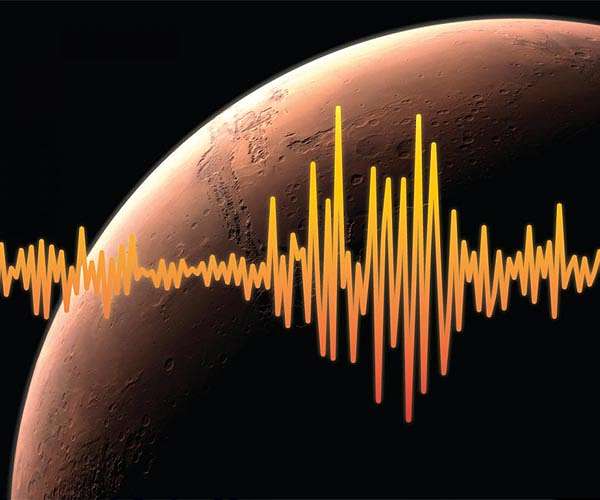Marsquakes could help detect underground water on Mars
by Clarence Oxford
Los Angeles CA (SPX) Jun 26, 2024
If liquid water exists on Mars today, it might be too deep underground for traditional detection methods used on Earth. However, a new approach involving marsquakes could offer a solution, according to Penn State scientists.
When quakes pass through deep aquifers, they generate electromagnetic signals. Researchers detailed in the journal JGR Planets how these signals, if also present on Mars, could reveal water miles below the surface. This study might pave the way for future Mars mission data analyses, noted Nolan Roth, a doctoral candidate in the Department of Geosciences at Penn State and lead author.
“The scientific community has theories that Mars used to have oceans and that, over the course of its history, all that water went away,” Roth said. “But there is evidence that some water is trapped somewhere in the subsurface. We just haven’t been able to find it. The idea is, if we can find these electromagnetic signals, then we find water on Mars.”
On Earth, tools like ground-penetrating radar can map the subsurface, but they are ineffective at the depths where Martian water may be. The researchers suggest using the seismoelectric method, a newer technique for non-invasively characterizing Earth’s subsurface. When seismic waves move through an aquifer, they produce electromagnetic fields due to differences in how rocks and water move. These signals, detectable by surface sensors, can reveal aquifer depth, volume, location, and chemical compositions.
“If we listen to the marsquakes that are moving through the subsurface, if they pass through water, they’ll create these wonderful, unique signals of electromagnetic fields,” Roth said. “These signals would be diagnostic of current, modern-day water on Mars.”
On Earth, identifying active aquifers using this method is challenging due to the presence of water outside aquifers, which creates background noise. On Mars, the desiccated near-surface eliminates this noise, making it easier to identify useful data, explained Tieyuan Zhu, associate professor of geosciences at Penn State and co-author.
The researchers modeled the Martian subsurface and added aquifers to test the seismoelectric method. They successfully analyzed details about the aquifers, including thickness and physical and chemical properties like salinity.
“If we can understand the signals, we can go back and characterize the aquifers themselves,” Roth said. “And that would give us more constraints than we’ve ever had before for understanding water on Mars today and how it has changed over the last 4 billion years. And that would be a big step ahead.”
Future work will involve analyzing existing Mars data. NASA’s Insight lander, launched in 2018, equipped with a seismometer and magnetometer, might provide relevant seismoelectric signals. A dedicated magnetometer on future missions could yield even better results.
“This shouldn’t be limited to Mars – the technique has potential, for example, to measure the thickness of icy oceans on a moon of Jupiter,” Zhu said. “The message we want to give the community is there is this promising physical phenomena – which received less attention in the past – that may have great potential for planetary geophysics.”
Yongxin Gao, professor at Hefei University of Technology in China, also contributed.
The Penn State E. Willard and Ruby S. Miller Fellowship and the National Natural Science Foundation of China supported researchers involved in this work.
Research Report:Characterizing Liquid Water in Deep Martian Aquifers: A Seismo-Electric Approach
Related Links
Penn State
Mars News and Information at MarsDaily.com
Lunar Dreams and more



